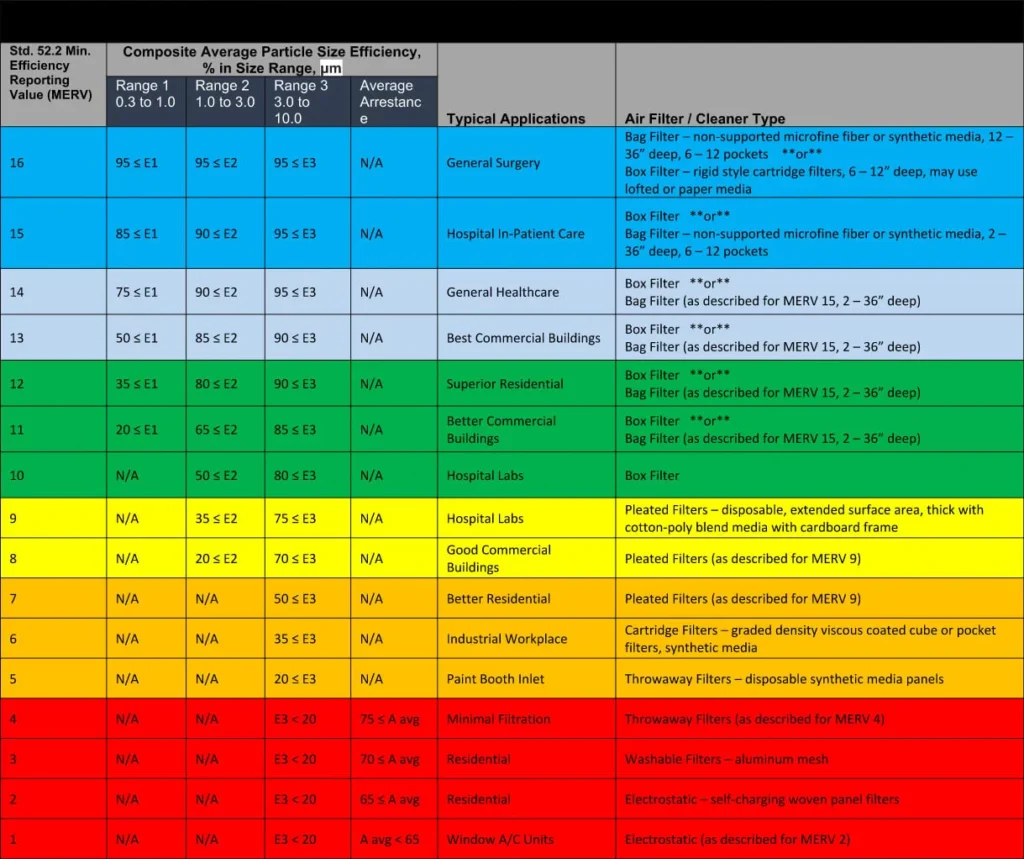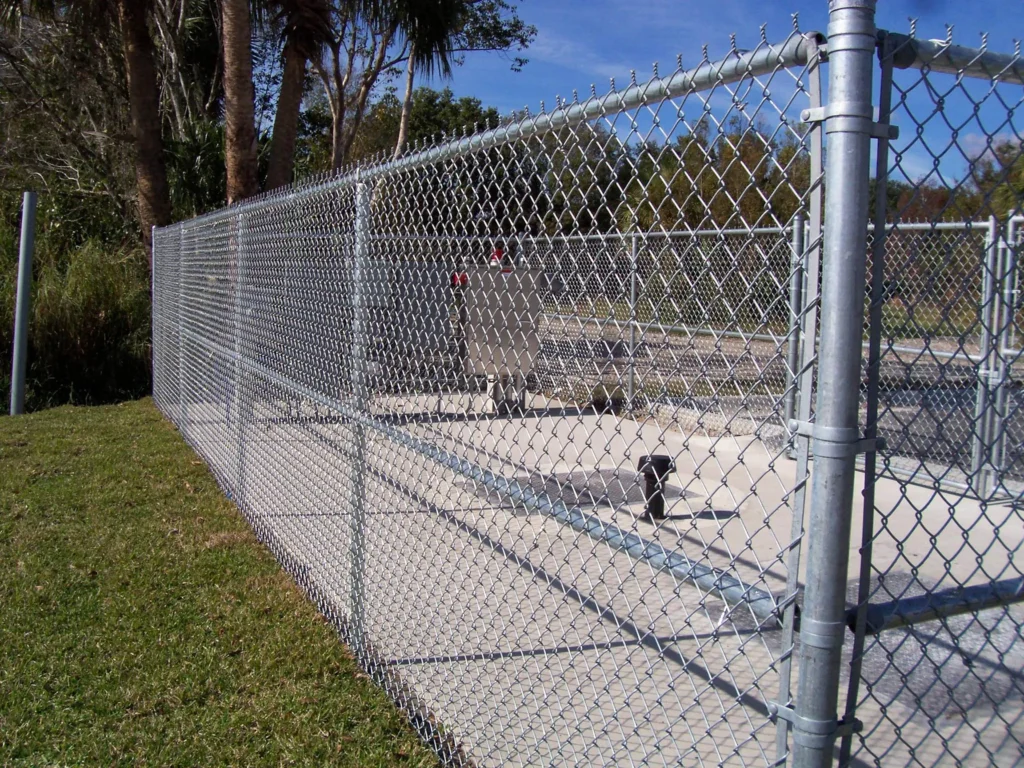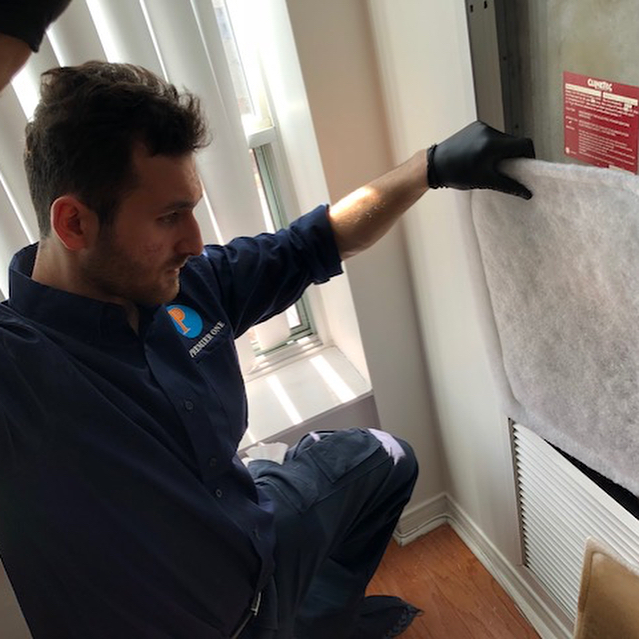When it comes to purchasing air filters, everyone from homeowners and building managers to maintenance staff and repair technicians needs to be in the know. Air filters are essential for maintaining indoor air quality and the efficiency of HVAC systems, which rely on regular replacement of these filters to ensure optimal air circulation and cleanliness. As a stakeholder in managing a property’s air quality, one of your responsibilities includes replacing these crucial components. To order a new set of air filters, you must know the specific size required for your unit as well as the MERV rating you prefer. You can find the size details in your unit’s specifications, but understanding MERV rating requires a bit more explanation.
MERV rating, or Minimum Efficiency Reporting Values, is a standard that indicates how effective an air filter is at capturing airborne particles. Specifically, it gauges a filter’s capacity to trap particles ranging from 0.3 to 10 microns in size, encompassing everything from common dust and mite particles to pollen, mold spores, and even certain microbes like bacteria.
The MERV rating runs from 1 to 20. Filters with a lower MERV rating are designed to capture only larger particles, such as visible dust and clumps of pollen. In contrast, filters with a higher MERV rating are capable of capturing much smaller particles, potentially including microscopic biological entities.
 A Guide to MERV Rating Efficiencies for Air Filters
A Guide to MERV Rating Efficiencies for Air Filters
MERV 1 to MERV 4:
Captures particles 3-10 microns at an efficiency of 20%.
MERV 6:
Intercepts particles 3-10 microns with a 50% success rate.
MERV 8:
Traps particles between 3-10 microns with an 85% efficiency rate.
MERV 10:
Catches 1-3 micron particles at an efficiency ranging between 50%-65%.
Secures 3-10 micron particles with over 85% efficiency.
MERV 12:
Snags 1-3 micron particles at an efficiency of 80%-90%.
Apprehends 3-10 micron particles with more than 90% efficiency.
MERV 14:
Ensnars 0.3–1 micron particles at a 75%-85% efficiency rate.
Secures 1-3 micron particles with over 90% efficiency.
MERV 16:
Captures 0.3-1 micron particles with at least 75% efficiency.
Understanding Microns and Efficiency in MERV Rating:
The MERV rating details the size of particles the filter can capture, with the micron measurement indicating the size threshold. The accompanying percentage reflects the filter’s effectiveness in trapping those particles. For instance, a MERV 6 filter captures 50% of particles sized 3-10 microns, meaning it will consistently intercept half of the particles within this size range during each filtration cycle. With each pass through the filter, a significant portion of these particles is removed from the air.
Conversely, a MERV 10 filter achieves an 85% capture rate for particles 3-10 microns and approximately 50% for smaller particles sized 1-3 microns. This indicates that with each cycle, a majority of larger particles and half of the smaller particles are filtered out.
 Chain-Link Fence Analogy
Chain-Link Fence Analogy
Imagine your air filter as a chain-link fence. Initially, it might allow tennis balls, ping pong balls, and marbles to pass through. If the weave of the fence is tighter, tennis balls would be blocked, but ping pong balls and marbles might still slip through. With an even tighter weave, not even marbles can pass through, although air, much like wind, can still flow.
This concept parallels the function of MERV-rated air filters. As the MERV rating increases, the “weave” of the filter becomes finer, capturing more and smaller airborne particles. However, the finer the mesh of the filter, the more susceptible it is to becoming clogged, necessitating more frequent replacements.
Low MERV, Standard Air Quality
Low MERV-rated filters are commonplace and sufficient for most homes and businesses to maintain satisfactory air quality. These filters are less expensive because they are not as densely woven as their high MERV-rated counterparts, and they require simpler materials to filter out larger particles instead of finer particulates and microorganisms.
MERV ratings of 1-8 are typical for residential and commercial environments. They effectively filter common air quality culprits such as:
- Pollen
- Dust mites
- Sawdust
- Lint and carpet fibers
- Household dust
- Mold spores
- Concrete dust
- Medium MERV, Enhanced Air Quality
MERV ratings from 9 to 12 are associated with enhanced air quality, capturing particles as fine as 1 micron. MERV 9-12 filters are used not only in hospitals and laboratories but also in residential and commercial buildings seeking superior air quality. Generally, non-specialized environments don’t require filters with MERV ratings higher than 12—high ratings above 12 are usually unnecessary unless the setting is a critical care unit or a high-tech lab.
Filters with MERV ratings between 9 and 12 are more efficient at capturing finer particles, including:
- Legionella
- Lead dust
- Flour dust
- Auto emission particulates
- Humidifier dust
- Milled flour
In the original text, it’s mentioned that MERV ratings between 8 and 12 are used for hospitals, which would imply MERV 8 is used in these settings. However, in most cases, healthcare facilities often use filters in the higher MERV range (13 and above) for better protection against microorganisms. MERV 8 filters are on the higher end for residential and some commercial buildings but not typically sufficient for hospital settings. Additionally, nebulizer and coal dust would likely be filtered by MERV ratings higher than 12.
High MERV, Hospital-Grade Air Quality
Facilities that necessitate exceptional air quality, akin to clean-room standards, opt for filters with MERV ratings above 12. Although MERV values can reach up to 20, ratings above 16 are uncommon; however, for certain critical applications, they are crucial for capturing extremely small particulates that, while minuscule, can be critical in specific environments.
Filters with MERV ratings exceeding 12 are often employed in settings such as clean rooms, pharmaceutical production, surgical suites, hospitals providing inpatient care, and areas where radioactive materials or carcinogens are handled or processed. In these high MERV ranges, filters can also capture:
- Decay products of radon
- Viral particles
- Emissions from copiers
- Carbon dust
- Ultrafine allergens
- Bacteria
 Determining the Appropriate MERV Rating for Your Building
Determining the Appropriate MERV Rating for Your Building
When tasked with the upkeep and replacement of air filters in a building, selecting the correct MERV rating is crucial. Many residential and commercial settings find MERV 1-4 sufficient to capture common particulates such as dust, pet dander, and fibers, helping to prevent the accumulation of debris within the premises. For improved air quality without incurring excessive costs, filters with MERV ratings between 8 and 12 offer a balanced solution, effectively trapping smaller particles and enhancing the overall filtration efficiency with each air cycle.
Take into account the specific cleanliness requirements and health concerns of your building, as well as any potential sources of particulate generation. Elevating the MERV rating may be prudent if you’re accommodating individuals with health vulnerabilities or if the environment is prone to additional dust from pets or ongoing construction activities. A higher MERV rating may also be necessary if there have been prior concerns regarding air quality or if certain regulatory air quality standards must be met.
Ultimately, the choice of MERV-rated air filter depends on the particular needs of your building’s HVAC system.
Interested in more information? Contact Premier One at (905) 209-1105 for further assistance.


